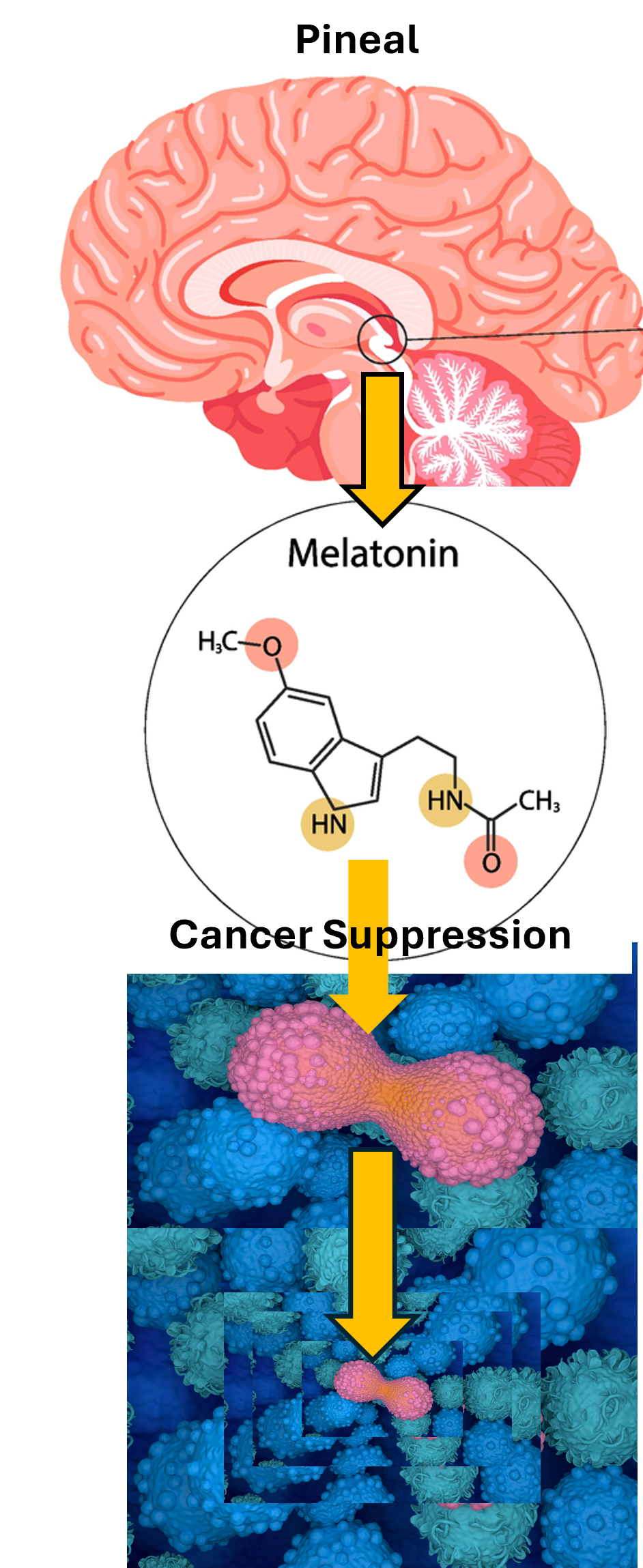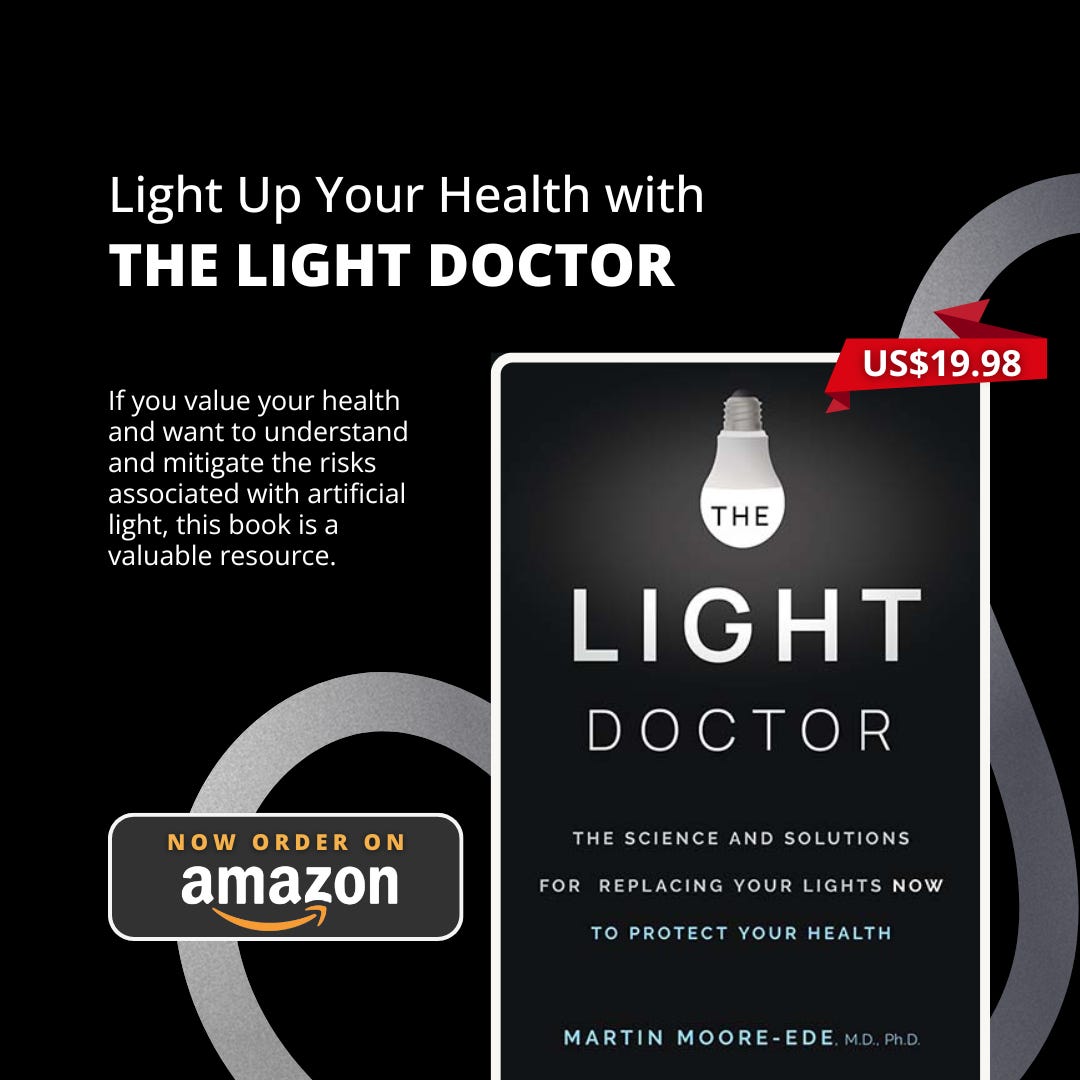Twenty Years Ago Scientists Confirmed Light at Night Increased Breast Cancer Risk
Week 2 of Breast Cancer Awareness Month (October 8 - 14th) explains how much we already knew 20 years ago
It is shocking to realize that twenty years ago, we already knew that exposure to electric light at night suppressed melatonin and increased breast cancer risk. And we also knew the most potent light wavelengths are, in the blue part of the spectrum. (See October 11 & 12 below)
In the twenty years since these discoveries, another 5 million American women have been diagnosed with breast cancer and over 40 million worldwide. And there is still an appalling lack of awareness that blue-rich light is a risk factor.
Of course, it takes time for scientific discoveries to be replicated, confirmed, and validated. Any single finding can have alternative explanations, but the full body of evidence today makes it clear that we should all avoid the use of blue-rich light in the evening and nighttime hours.
The full explanation of this evidence and the relevant scientific citations can be found in my book, THE LIGHT DOCTOR.
October 8
25 years ago: Breast cancer linked to light exposure in night workers in large epidemiological studies
In 2001, three large-scale epidemiological studies with over 87,000 women showed an approximately 50% increase in breast cancer diagnoses in those exposed to electric light while working night shifts.
October 9
25 years ago: Blind women rarely get breast cancer
It’s been known since 2001 that blind women, who are exposed to all the same environmental carcinogens except for light at night, have less than half the rate of breast cancer if they become blind before 65 years of age. The breast cancer rate is probably much less in women who become totally blind before puberty.
October 10
25 years ago: Women who sleep with lights on at night have more breast cancer
In 2001 the first studies showed that women who slept in well-lit bedrooms at night had a 40% increased rate of breast cancer. Even if the light level is barely enough to read, the light penetrating a woman's closed eyelids is enough to increase breast cancer risk.
October 11
25 years ago: Our eyes contain a blue-sensitive photopigment responsible for synchronizing the master circadian clock
In 2000 the intrinsically photosensitive retinal ganglion cells (ipRGCs) in the retina that are linked to the master SCN circadian clock were discovered to contain a blue-sensitive photopigment called melanopsin.
October 12
25 years ago: The blue wavelengths in light are the most potent in suppressing melatonin
White electric light is typically comprised of the different color wavelengths in a rainbow. In 2001 short wavelengths at the blue end of the light spectrum were shown to be the most potent in suppressing melatonin release.
October 13
20 years ago: Melatonin inhibits the initiation, progression, and metastasis of breast cancer
By 2005 the broad role of the darkness-induced nightly melatonin surge in preventing and controlling breast cancer had been defined. Melatonin was shown to inhibit the initiation, progression, and metastasis of breast cancer.
October 14
20 years ago: Validation of Light at Night – Melatonin – Breast Cancer Hypothesis
A classic study in 2005 validated the direct link between light exposure at night, melatonin suppression, and breast cancer growth using rats implanted with human breast cancer tumors.
Rats with implanted human breast cancer grafts showed rapid tumor growth when the rats were under light at night and slower tumor growth when the rats were left in the dark at night.
The role of melatonin was shown by taking blood from young women sitting in the dark at night when their melatonin levels were high. This melatonin-rich blood slowed the growth of implanted human breast cancer tumors in rats. In contrast, low melatonin blood samples from women who were under bright lights at night allowed rapid breast tumor growth in the rats.
Sources
For further details and background on each of these scientific developments please consult my new book THE LIGHT DOCTOR: Using Light to Boost Health, Improve Sleep and Live Longer. This also provides the citations to the scientific peer-reviewed literature.
THE LIGHT DOCTOR is a reader-supported publication. To receive new posts and support our campaign for healthy lighting, please consider becoming a free or paid subscriber.












